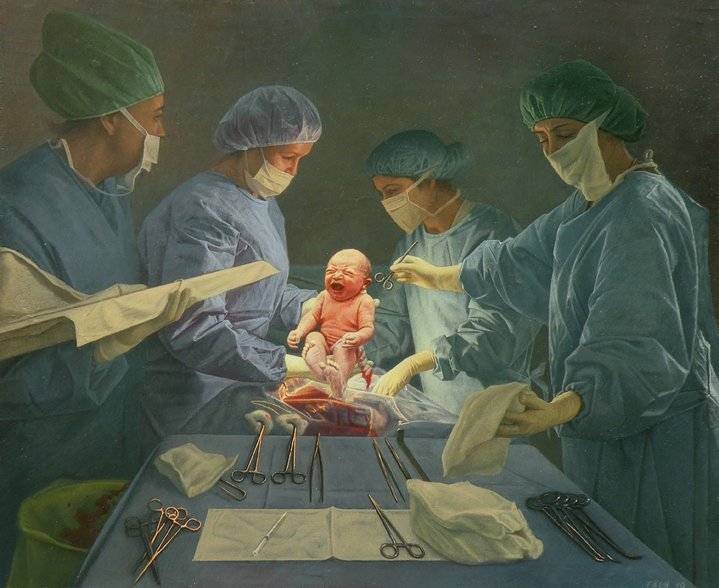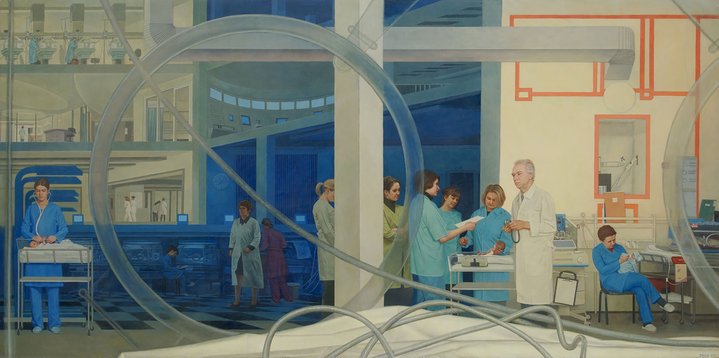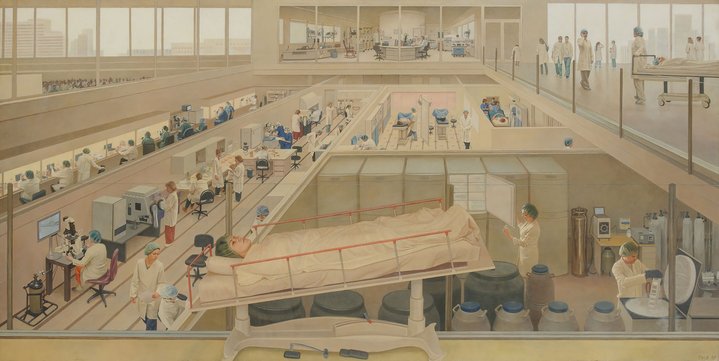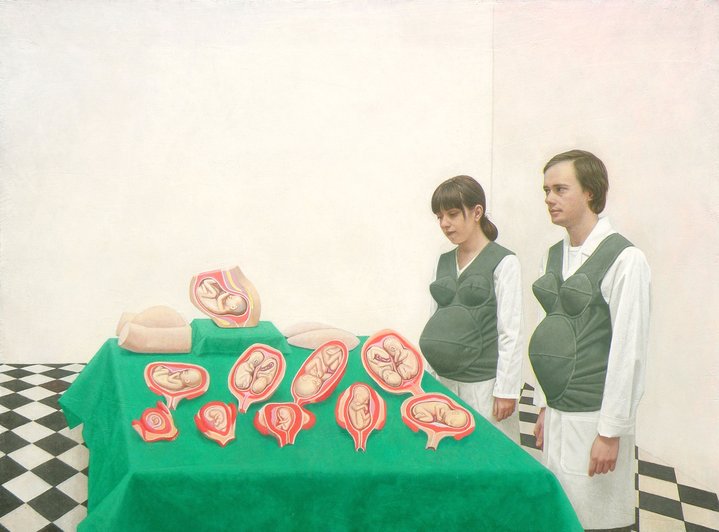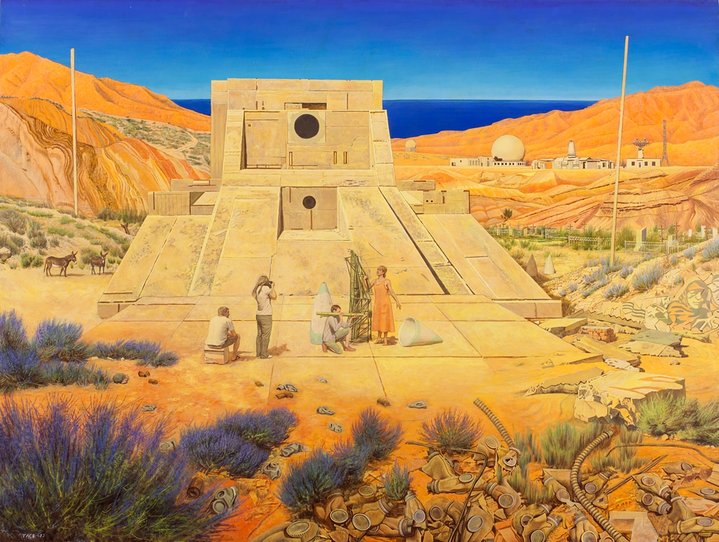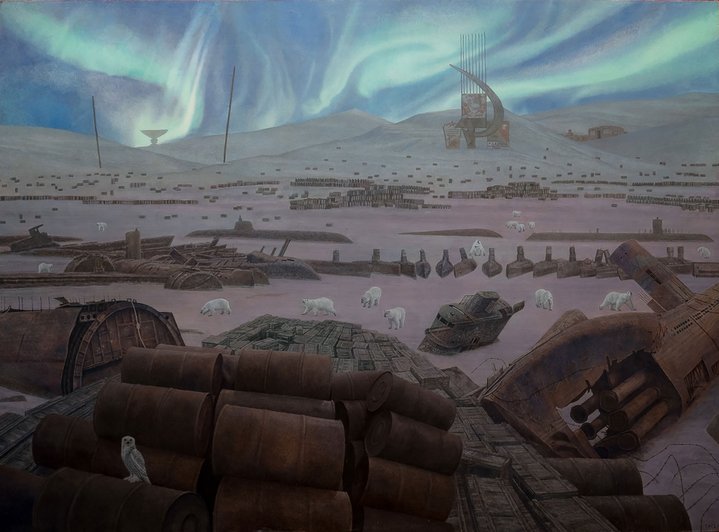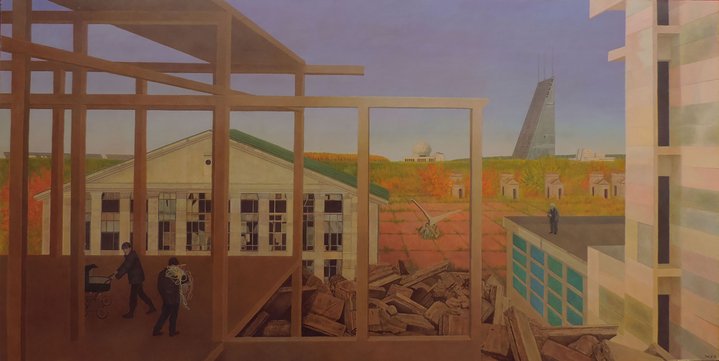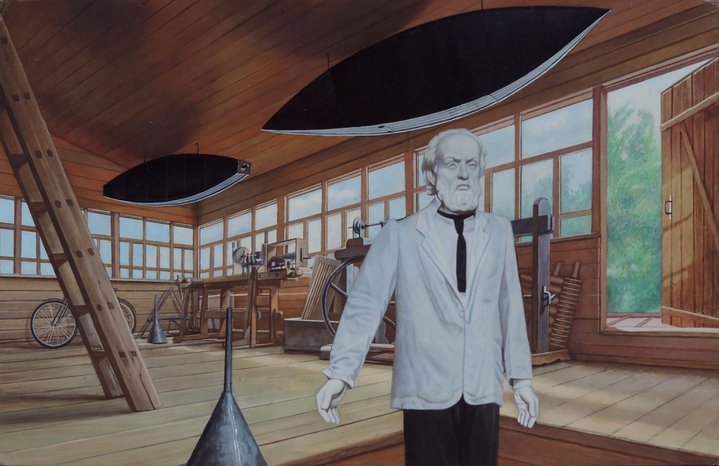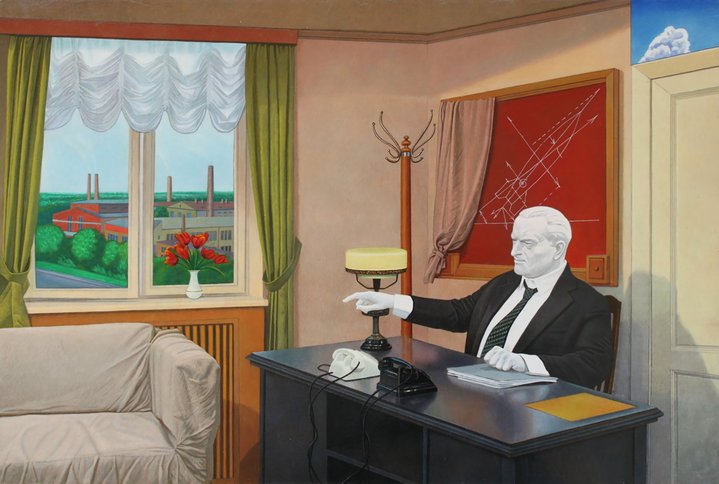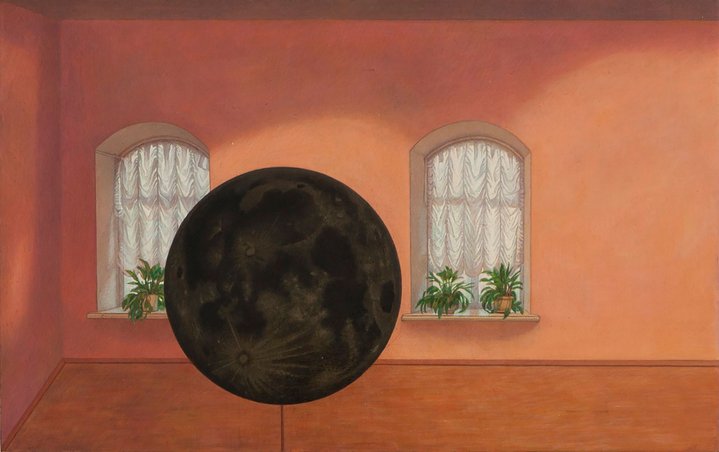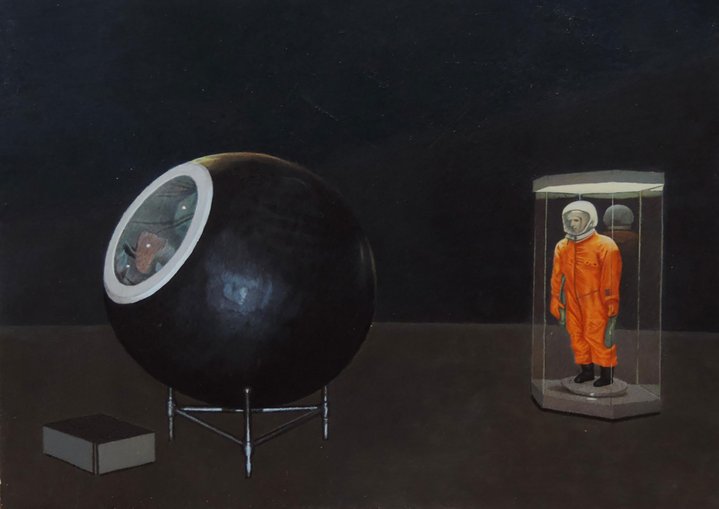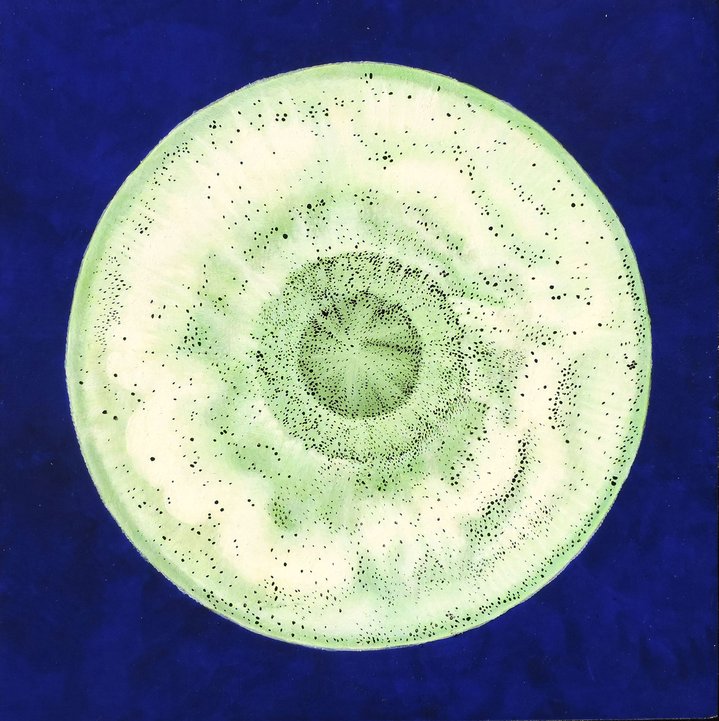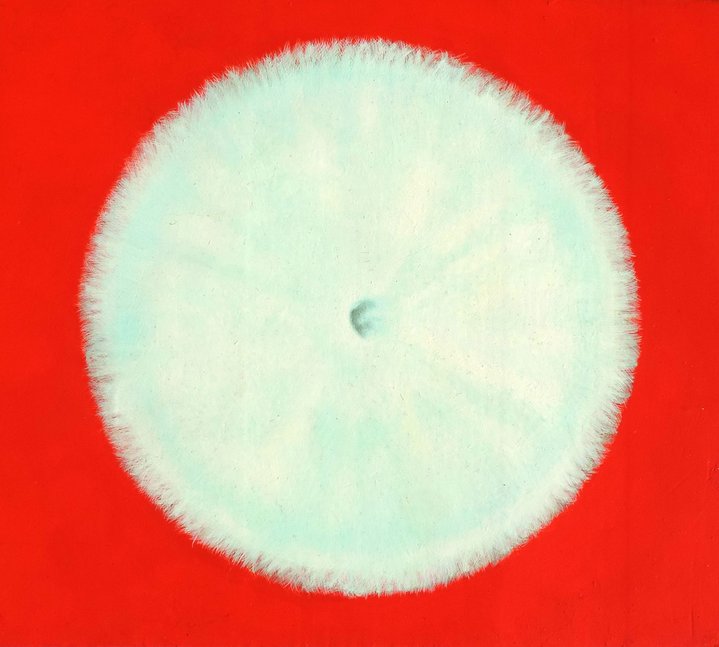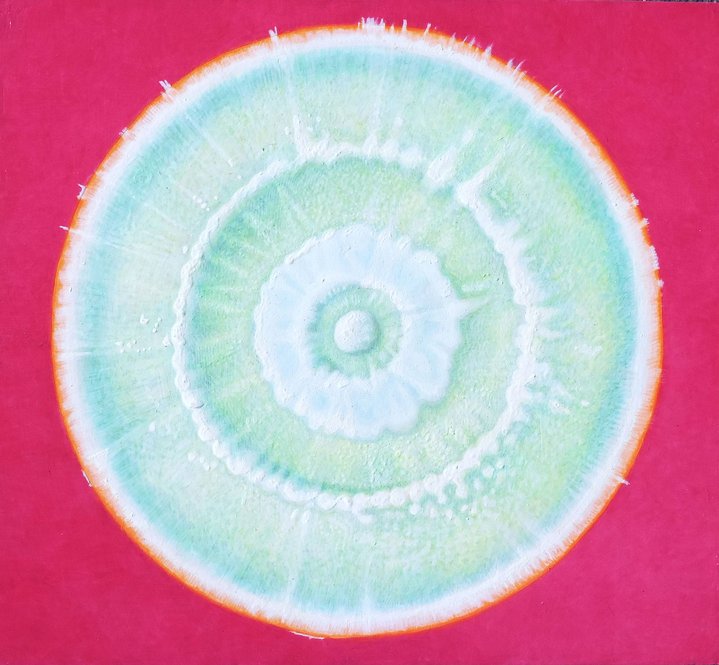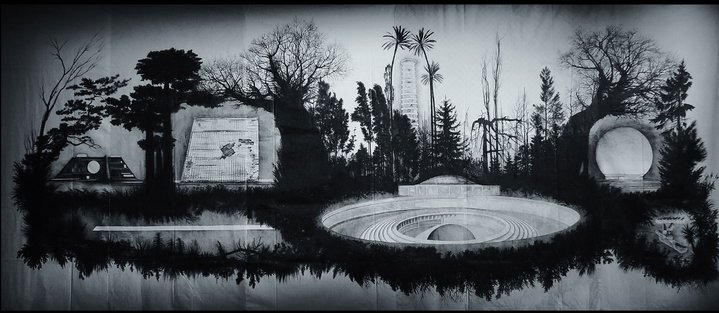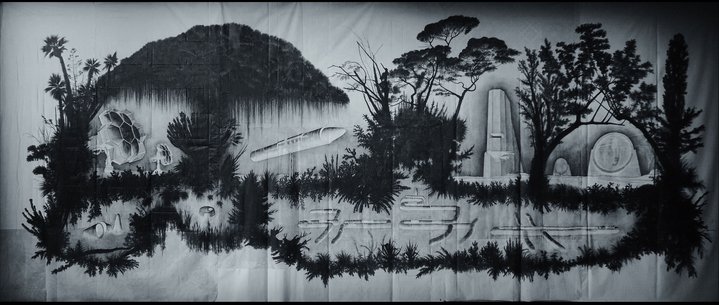Tempera meets tech: Taisia Korotkova's retro-futurism

The artist who has made a name for herself in depicting hi-tech and modern science in the technique of the quattrocento has opened a new exhibition at the State Tretyakov Gallery, continuing the exploration of Soviet military ruins and their folkloric allure.
There is an immediate schism between subject matter and medium, which begs for attention in the work of Taisia Korotkova (b. 1980): She portrays scientific and technological subjects – satellites, incubators, computers, atomic reactors, hydron colliders and medical machinery – using the antiquated medium of egg tempera on gesso-primed panel, widespread half a millennium ago, before the renaissance popularised oil paint.
She asked her icon-painter father to teach her this technique and she liked it. “Because you can achieve real depth, you get a luminosity of colour in the paint. When you mix the ground pigment and egg yolk, if you look at it through a microscope, you can see it has a porous surface, when the work is coated with boiled linseed oil at the end it saturates that surface and the light refracts making the colour very deep, saturated.”
Her scientific de-mystification of tempera is counterpoised with her aesthete’s eye cast over science. This juxtaposition is a very effective opening for the broadest territory of inquisition, where she manages to balance successfully in the middle, a tightrope walker between the worlds of art and science. “I wanted to explore the relationships between the public and the private and scientific progress and the human factor, using old painting techniques to show how alluring yet eerie the world of new technologies is,” explains Korotkova in relation to Reproduction, a painting series devoted to the factory of contemporary childbirth such as IVF, incubators, neonatal intensive care. The series won her Russia’s foremost award in contemporary art in 2010, the Kandinsky prize, in the category ‘Young Artist. Project of the Year’.
Perhaps her established status now allows her to experiment in more ambiguous and daring media and modes of self-expression. Moving away from the easel, her latest solo exhibition, ‘Dark Forest’ (April 29 – June 13, 2021), includes installations and showcases a set of huge drawings dedicated to the subject of derelict soviet military objects, such as bunkers, observatories, testing-grounds.
The artist conducted most of her research reading blogs written by so-called stalkers, people who seek out and explore these classified objects. Their accounts are laden with folkloric mystical flair, framing them as intrepid heroes. Framing the objects in forest landscapes sometimes with suggestive and fantastical foliage (cactus and fir side by side), she plays into this mystification, evoking both classical fairy-tale illustrations and Soviet science fiction settings. This is, in fact, a continuation of her earlier tempera series ‘Closed Russia’ – where various classified locations – either secret towns, experimental grounds or the inside of experimental scientific institutions, eerie dystopian ruin landscapes, or radioactive waste processing plants – are painted in a luminescent tempera. But the second installments are executed on the reverse of rolls of tablecloth (the cheap plastic kind found at any dacha), some as huge as 6.5 metres long – these scrolls might resemble the hidden works of an obsessive auto-didact.
In fact, they are far from it. Korotkova has had an extremely rigorous and thorough art education. She was born in Moscow and is now based in Italy. Coming from a family of artists (her grandfather Nikolai Sukoyan (1915--2009) was the main architect of the New Tretyakov Gallery building where Korotkova’s exhibition takes place), she imbued the canon of classical painting from earliest childhood. She studied at the foremost fine art institutions of Moscow: a seven year preparatory arts school, followed by another six years at the Surikov Institute. This simultaneously with courses at Russia’s first and foremost private Institute of Contemporary Art (IPSI). It amounts to a huge educational baggage for which she is grateful, saying that everything she learnt at every stage was interesting and comes in handy.
Denying the opposition of traditional and contemporary art in Russia, Korotkova here embraces both schools of thought, opening up a space of dialogue and positive mutual contamination. She says she sees her academic background and immense mastery therein achieved as an instrument, or an artistic arsenal, which we can see her deftly deploying. She is a meticulous researcher, a master of many techniques, adept in colour composition, anatomy, chiaroscuro; her works are laced with overt and covert art-historical references. What appears almost a photorealistic representation is, in fact, a masterfully collated and crafted fabrication. A multi-layered question. The questions of what art is called to represent, in relation to time and memory, individuality, national history, the place of humans in relation to their surroundings – natural and artificial, experimental successes and failures, the role of machines in contemporary life. The temporality and power of scientific achievement.
Opening up this space of questioning for the viewer, her own position is intentionally ambivalent and modest:
“I’m ironic about everything”
“I’m an artist and I love with my eyes”
“At the moment I love science fiction”






